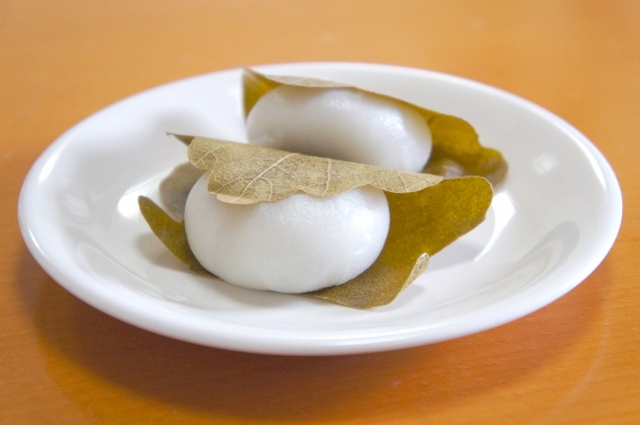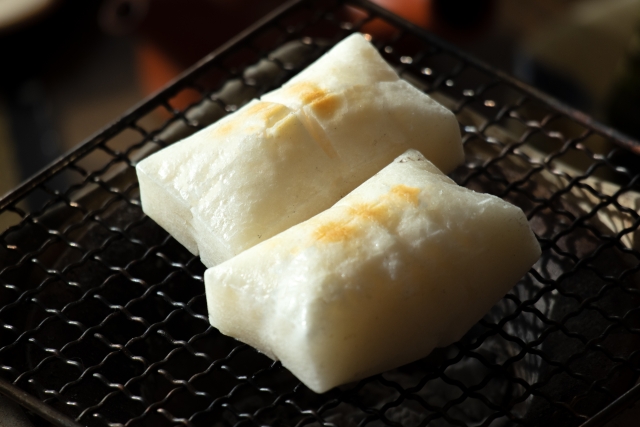Japan, a country steeped in tradition, has a food culture that is deeply intertwined with its history.
One of these traditional food items that stand out is “Mochi” – a soft, chewy treat made from a particular type of Japanese rice known as mochigome.
For tourists who want to delve into the culinary heritage of Japan, understanding Mochi is a fascinating journey.
What is Mochi?
Mochi is a type of Japanese rice cake made from mochigome, a short-grain glutinous rice.
The rice is soaked, steamed, and then pounded into a paste in a process known as mochitsuki. The paste is then shaped into cakes, either by hand or using molds.
Mochi is known for its distinctively chewy texture and subtly sweet flavor.
Mochi is not only a food item but also a significant symbol in Japanese culture. It is often associated with celebrations and special occasions, serving as a ceremonial food during the New Year festivities and a sweet treat enjoyed during the cherry blossom season.
The Cultural Significance of Mochi
Mochi plays a vital role in Japanese culture and traditions.
It is customary to make and eat mochi during the New Year celebrations, a practice dating back centuries. Known as Kagami Mochi, this special New Year’s decoration consists of two round mochi cakes, one larger than the other, stacked together and topped with a bitter orange known as daidai.
| Celebration | Mochi Type | Description |
|---|---|---|
| New Year | Kagami Mochi | Two round mochi cakes, one larger than the other, stacked together and topped with a daidai (bitter orange) |
| Children’s Day | Kashiwa Mochi | Mochi filled with sweet bean paste and wrapped in an oak leaf |
| Doll Festival | Hishi Mochi | Tri-color mochi layers, each color symbolizing health, longevity, and fertility |
| Autumn Equinox | Tsukimi Dango | Round, white mochi balls served to celebrate the harvest moon |
Types of Mochi

There are numerous types of mochi, each associated with a specific time of the year or celebration.
Here are some of the most popular types:
- Kashiwa Mochi – These mochi are filled with sweet bean paste and wrapped in an oak leaf. They are traditionally eaten on Children’s Day, which is celebrated in May.
- Sakura Mochi – These are sweet pink mochi filled with sweet bean paste and wrapped in a pickled cherry blossom leaf. They are traditionally eaten during the cherry blossom season in spring.
- Dango Mochi – These are skewered mochi balls that come in various flavors.
- Daifuku Mochi – These are small round mochi stuffed with sweet fillings like sweet bean paste.
Each type of mochi has its unique flavor profile and texture, offering a delightful variety for the adventurous foodie.
How to Enjoy Mochi
Mochi can be enjoyed in a variety of ways. It’s often eaten as is, especially when it’s filled with sweet bean paste. Mochi can also be a part of a more elaborate dessert, served with sweet syrup, kinako (soybean flour), or even ice cream.
Another popular way to eat mochi is to grill it. Grilled mochi, known as yakimochi, becomes crispy on the outside and gooey on the inside. It’s often served with soy sauce and wrapped in seaweed.
Additionally, mochi is used in traditional Japanese dishes. For instance, in ozoni, a soup traditionally eaten as the first meal of the New Year, mochi is an essential ingredient.
Where to Buy and Eat Mochi in Japan
Mochi can be found in supermarkets, convenience stores, and specialty sweets shops across Japan.
However, for a truly authentic experience, consider visiting a traditional wagashi shop, where artisans make the mochi by hand using traditional methods.
Tips for Enjoying Mochi Safely
As delightful as mochi is, it’s essential to eat it cautiously due to its sticky, chewy texture. Here are some tips for safely enjoying mochi:
- Take small bites: Mochi is very sticky and can be a choking hazard. Always cut it into small pieces and take small bites.
- Chew thoroughly: The chewy texture of mochi requires thorough chewing before swallowing.
- Have a drink nearby: A drink can help to swallow the mochi more easily. Green tea is a traditional accompaniment.
- Mind the fillings: Mochi often has sweet or savory fillings. Be cautious as the fillings can be hot, especially if the mochi has been heated or grilled.
By taking these precautions, you can safely enjoy the delicious and unique experience that mochi offers.
Conclusion
From its humble origins to its status as a cultural symbol and favorite treat, mochi is undeniably a staple of Japan’s culinary identity.
Whether you’re sampling sakura mochi under cherry blossom trees, enjoying a skewer of dango at a festival, or savoring a bowl of ozoni to welcome the New Year, tasting mochi allows you to participate in a delicious, time-honored tradition.
So, when you visit Japan, make sure to taste mochi – a chewy piece of Japanese culture!



comment